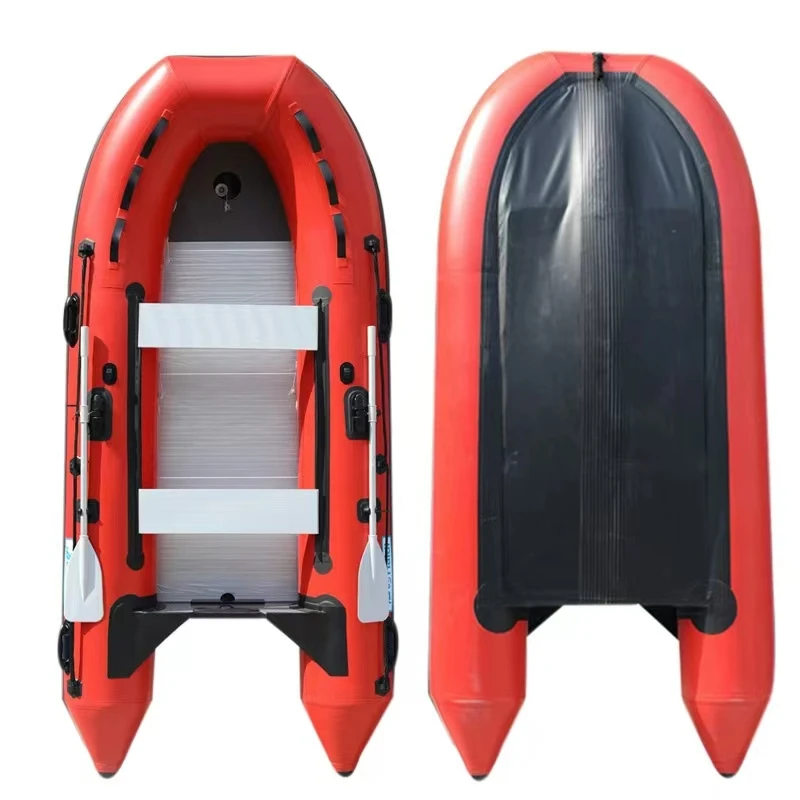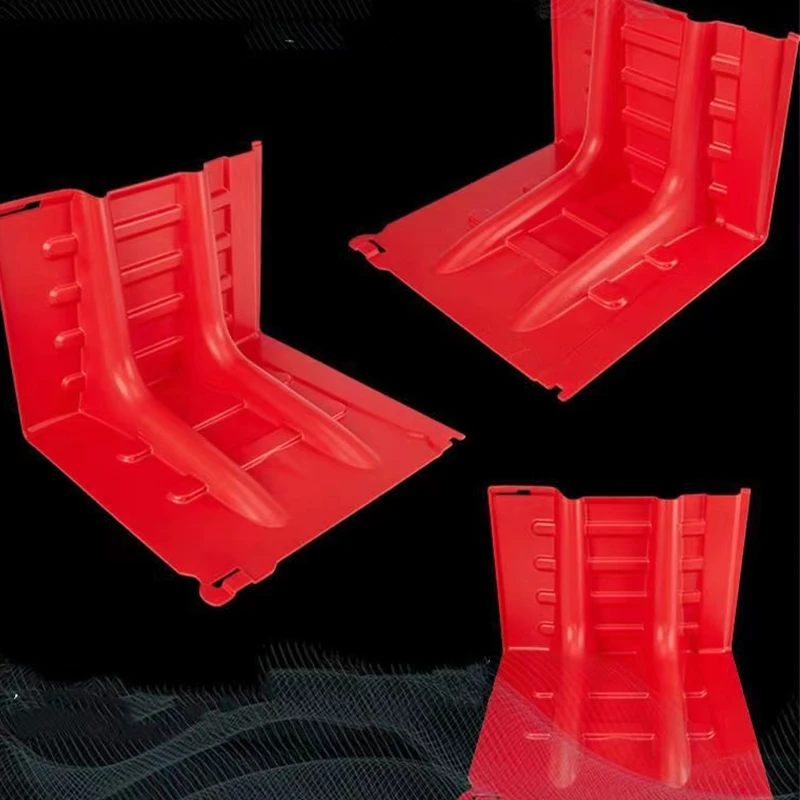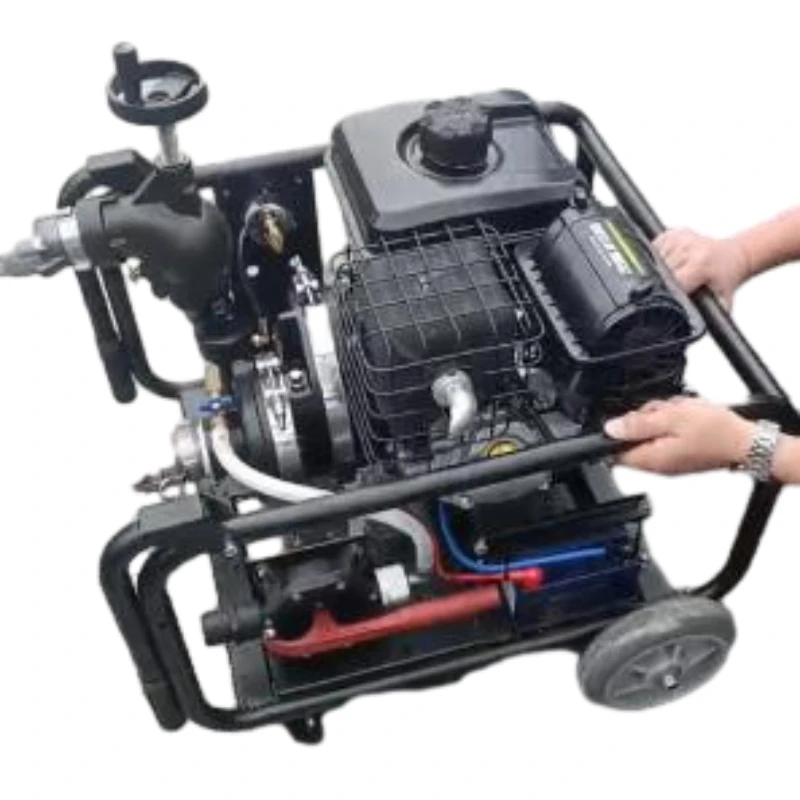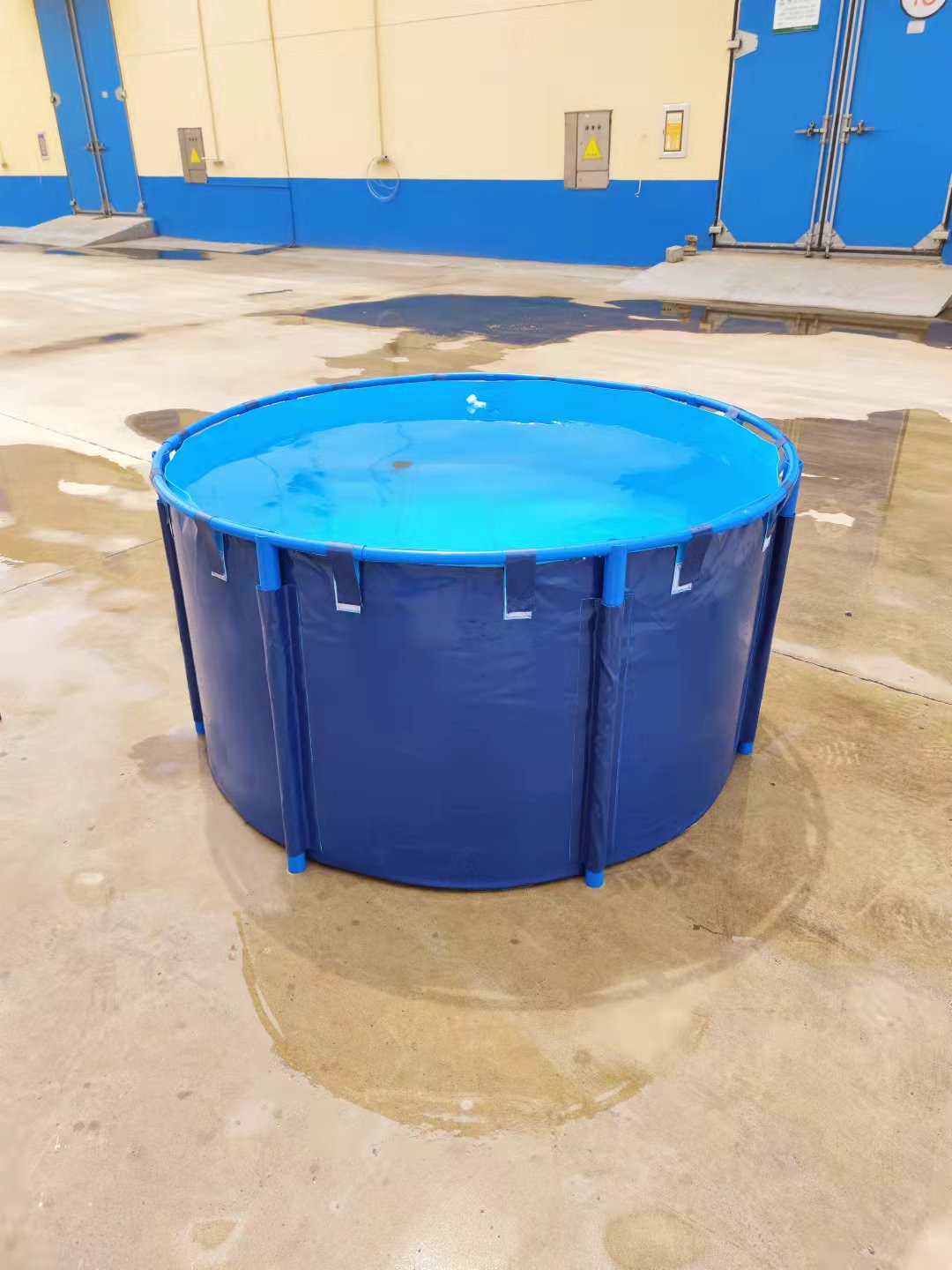Introduction to High-Pressure Forestry Portable Fire Water Pumps
In the demanding world of wildfire suppression and remote area fire fighting, the efficiency and reliability of equipment are paramount. The light duty high pressure forestry portable fire water pump represents a critical advancement, offering unparalleled maneuverability and robust performance in challenging terrains. Designed for rapid deployment and sustained operation, these pumps are engineered to deliver high pressure, crucial for effective water projection over significant distances and elevations, making them indispensable tools for forestry services, rural fire departments, and emergency response teams. This article delves into the technical intricacies, application benefits, and strategic importance of these specialized pumping solutions.
Industry Trends and Market Dynamics
The market for forestry fire suppression equipment is undergoing significant evolution driven by several key trends. Climate change-induced increases in wildfire frequency and intensity globally have escalated the demand for more effective and rapidly deployable suppression tools. This has led to a greater focus on lightweight, fuel-efficient, and high-performance pumps. Innovations in engine technology are reducing emissions and improving fuel economy, while advancements in pump materials (e.g., aerospace-grade aluminum alloys, corrosion-resistant polymers) are enhancing durability and reducing overall weight. Furthermore, the integration of smart technologies, such as remote monitoring capabilities for pump performance and fuel levels, is emerging as a critical feature, allowing for more strategic resource deployment. The emphasis on user-friendly design, quick-start mechanisms, and minimal maintenance requirements also reflects a trend towards optimizing operational readiness in critical situations.
According to recent reports, the global market for fire fighting equipment is projected to grow at a Compound Annual Growth Rate (CAGR) of over 6% between 2023 and 2030, with a significant portion attributed to portable and specialized units for wildland fire fighting. This growth is fueled by increasing investments in fire safety infrastructure by governments and private entities, alongside a heightened awareness of the economic and ecological impact of wildfires. The market is also seeing a shift towards multi-purpose pumps that can handle various water sources, from static tanks to natural bodies of water, further expanding their utility.
Technical Specifications and Performance Parameters
A thorough understanding of the technical specifications is crucial for selecting the appropriate equipment for specific operational needs. The light duty high pressure forestry portable fire water pump is engineered with a focus on delivering robust hydraulic performance within a compact and lightweight footprint. Key parameters include engine type, pump type, flow rate, maximum pressure, suction lift, and overall dimensions and weight. These pumps typically feature single-stage or multi-stage centrifugal impellers, optimized for high head pressure delivery.
Typical Product Specification Table
These specifications highlight the pump's capability to provide substantial pressure for forestry applications while maintaining portability. The multi-stage centrifugal design is key to achieving the high head pressures required to overcome elevation changes and deliver water effectively over long hose lays.
Manufacturing Process and Quality Assurance
The production of a light duty high pressure forestry portable fire water pump involves a meticulous process that combines advanced manufacturing techniques with rigorous quality control to ensure superior performance and longevity in demanding environments.
Process Flow Overview:
- Material Selection & Sourcing: High-grade materials are critical. For pump casings and impellers, corrosion-resistant aluminum alloys (e.g., A356, 6061-T6) are chosen for their strength-to-weight ratio and resistance to water, while stainless steel (e.g., 304, 316) is used for shafts and fasteners to prevent rust and ensure durability. Engine components are sourced from reputable manufacturers, adhering to strict performance and emission standards.
-
Component Manufacturing:
- Casting: Pump volutes and impellers are typically produced via precision sand casting or die casting using aluminum alloys. This process ensures complex geometries with high accuracy and excellent surface finish. Subsequent heat treatment processes enhance material hardness and fatigue resistance.
- Forging: Critical engine components like crankshafts and connecting rods often undergo forging, a process that improves grain structure and mechanical properties, resulting in superior strength and impact resistance compared to casting.
- CNC Machining: Precision machining using Computer Numerical Control (CNC) equipment is applied to all critical components, including pump housing mating surfaces, impeller clearances, and engine block bores. This ensures tight tolerances (e.g., ±0.01mm) for optimal sealing, hydraulic efficiency, and reliable engine operation.
- Surface Treatment: Components exposed to water or environmental elements receive specialized coatings, such as anodizing for aluminum parts to enhance corrosion resistance and wear properties, or powder coating for the protective frame, providing a durable finish.
- Assembly: A dedicated assembly line integrates the engine, pump head, frame, and peripheral components (e.g., fuel tank, control panel). Each step is performed by skilled technicians, often utilizing torque-controlled tools to ensure consistent fastening.
-
Rigorous Testing & Quality Control:
- Performance Testing: Every pump undergoes a full operational test, including flow rate, maximum pressure, and suction lift verification, often adhering to standards like ISO 2858 or NFPA 1901 for fire pumps. Engine performance (RPM, power output, fuel consumption) is also validated.
- Endurance & Durability Tests: Batch testing involves extended run times and stress tests to simulate real-world conditions, ensuring a long service life, typically projected for 5-10 years with proper maintenance.
- Leakage & Pressure Tests: Hydrostatic pressure tests are performed on pump casings to detect any structural weaknesses or potential leaks.
- Certifications: Products are manufactured under ISO 9001 certified quality management systems. Compliance with local and international standards such as ANSI (American National Standards Institute) for safety and performance, CE for European market access, and EPA/CARB for engine emissions is typically ensured.
- Final Inspection & Packaging: A final visual inspection confirms cosmetic quality and proper documentation before protective packaging for shipment.
This rigorous process ensures that each light duty high pressure forestry portable fire water pump delivers exceptional energy saving through optimized hydraulic design and outstanding corrosion resistance due to advanced material selection and surface treatments, making it ideal for the harsh environments encountered in forestry and remote fire suppression.
Application Scenarios and Operational Experience
The versatility and high-pressure capabilities of these portable pumps make them indispensable across a wide array of application scenarios, primarily focused on remote and challenging environments where traditional fire apparatus cannot easily access.
- Wildland Fire Suppression: This is the primary application. Firefighters use these pumps to draw water from natural sources like rivers, lakes, ponds, or portable tanks to create firebreaks, extinguish spot fires, or wet down vegetation ahead of a fire front. Their portability allows them to be carried deep into forests or mountainous regions.
- Remote Structure Protection: In areas with limited access or inadequate municipal water infrastructure, such as rural cabins, forest outposts, or agricultural buildings, these pumps can be deployed to establish a water supply for structural protection during wildfires.
- Hose Lay Relay Systems: For very long hose lays over undulating terrain, multiple pumps can be used in a relay system. A pump positioned at an elevated point can boost the pressure for the next section of hose, ensuring continuous high-pressure water delivery to the fire line. This is a common tactic in steep terrain operations.
- Controlled Burns and Prescribed Fire Management: During prescribed burns, these pumps are vital for establishing wet lines and extinguishing any runaway fires or spot fires that jump containment lines, providing a critical safety net.
- Water Transfer for Base Camps: Beyond fire suppression, these pumps can be used for general water transfer in remote fire base camps, such as filling larger water tenders from natural sources or supplying water for hygiene and cooking, demonstrating their multi-utility.
- Disaster Relief & Emergency Dewatering: In flood situations or after heavy rains in remote areas, the pumps can be repurposed for emergency dewatering of basements, small areas, or even clearing blocked culverts, showcasing their adaptability.
Feedback from fire agencies often highlights the quick-start capability, robust framing for protection during transport, and ease of connection as critical features. Operators appreciate the straightforward controls and the manageable weight, allowing single-person deployment in many scenarios. Training programs extensively cover the proper use of these pumps, emphasizing safe operation, maintenance, and strategic deployment tactics to maximize their effectiveness in critical situations.
Technical Advantages and Distinctive Features
The inherent design and engineering of the light duty high pressure forestry portable fire water pump offer several technical advantages that set it apart in its class, optimizing performance and operational efficiency in strenuous fire fighting operations.
- Exceptional Power-to-Weight Ratio: Through the use of lightweight yet durable engine blocks (e.g., aluminum, magnesium alloys) and pump housings, these units deliver significant hydraulic power (high pressure and decent flow) while remaining easily transportable by one or two individuals, crucial for rapid deployment in rugged terrain.
- Optimized Multi-Stage Impeller Design: Unlike standard transfer pumps, the multi-stage centrifugal pump head is specifically engineered to generate very high discharge pressures, enabling long-distance water projection and effective use with small-diameter hose lines or high-pressure nozzles, which are vital for water conservation and precise application in forestry.
- Self-Priming Capability: Most models incorporate robust self-priming systems (e.g., exhaust primer, diaphragm primer, or venturi jet assist) that quickly establish suction from a static water source, minimizing setup time and maximizing response efficiency, a critical feature in emergency situations.
- Ruggedized Construction: The protective outer frame, typically constructed from tubular steel or aluminum, not only provides a stable base but also shields the engine and pump from impacts during transport and operation in harsh environments, significantly extending service life. Anti-vibration mounts further enhance durability and operational stability.
- Fuel Efficiency and Extended Run Times: Modern, small-displacement 4-stroke engines are selected for their excellent fuel economy, allowing for extended periods of operation on a single tank, reducing the need for frequent refueling in remote locations. This enhances sustained attack capabilities.
- Corrosion and Abrasion Resistance: Internal pump components are often made from specialized alloys or treated with coatings to resist corrosion from various water sources and abrasion from suspended particulates, ensuring sustained performance and reducing maintenance needs over time.
These technical advantages collectively contribute to a highly reliable, efficient, and durable piece of equipment that meets the exacting demands of professional fire suppression personnel.
Vendor Comparison Considerations
When selecting a supplier for a light duty high pressure forestry portable fire water pump, B2B decision-makers must evaluate several critical factors beyond just initial cost. A comprehensive vendor comparison ensures long-term value, operational reliability, and effective support.
Key Comparison Criteria:
Authoritative vendors typically provide transparent data sheets, performance curves, and demonstrate adherence to international quality standards like ISO 9001 for manufacturing and relevant fire safety standards. They often have a long history in the industry and verifiable client testimonials or case studies, further solidifying their authority and trustworthiness.
Customized Solutions for Specific Demands
Recognizing that every operational environment and agency has unique requirements, leading manufacturers offer customized solutions for their light duty high pressure forestry portable fire water pump range. This flexibility ensures that the equipment perfectly integrates with existing infrastructure and meets specific tactical needs.
- Connection Type Adaptation: Adapters and custom fittings for various national and international hose connection standards (e.g., NST, NPSH, BSP, Storz) are available, ensuring seamless integration with existing hose inventories.
- Engine Options: While standard models use popular gasoline engines, some manufacturers can offer options for alternative fuel types or specific engine brands based on client preference, availability of local service, or environmental regulations.
- Frame & Portability Modifications: Custom frames can be designed for specific vehicle mounting, integration into skid units, or to enhance ergonomics for specialized carry methods. Options like integrated tool storage or additional tie-down points are common.
- Accessory Bundles: Tailored kits including specific lengths of suction hose, discharge hose, nozzles (fog, straight stream, specialized foam nozzles), intake strainers, and fuel container111s can be assembled to create ready-to-deploy packages.
- Pressure/Flow Optimization: For unique applications, manufacturers can fine-tune impeller designs or engine RPM governors to prioritize either maximum flow or maximum pressure within the pump's operational envelope.
- Remote Monitoring Integration: For large-scale operations or fixed pump stations, the option to integrate telematics for remote monitoring of fuel levels, run time, and pressure outputs can be provided, enhancing situational awareness.
These customization capabilities highlight a vendor's commitment to meeting diverse customer needs, demonstrating a deep understanding of operational challenges and providing truly bespoke solutions that maximize effectiveness in the field.
Application Case Studies
Real-world scenarios best illustrate the effectiveness and critical role of the light duty high pressure forestry portable fire water pump. These case studies underscore the equipment's value in diverse and challenging operational contexts.
Case Study 1: Remote Wildfire Containment in Mountainous Terrain
In the summer of 2022, a fast-moving wildfire erupted in a densely forested, steep mountainous region inaccessible to traditional fire trucks. A regional forestry service deployed multiple teams, each equipped with a light duty high pressure forestry portable fire water pump. Teams were able to backpack these units up steep trails to natural water sources (mountain streams and small alpine lakes). The pumps were used in a relay system, effectively moving water over an elevation gain of 300 meters and a horizontal distance of 1.5 kilometers to create a critical firebreak. The high pressure capability allowed for long hose lays and effective water projection even with limited flow, crucial for knocking down hot spots and creating a wet line. The rapid deployment capability of these lightweight pumps was credited with containing the fire before it reached a populated valley, preventing significant property damage and loss of life.
Case Study 2: Protecting Rural Infrastructure During a Grassland Fire
A major grassland fire threatened a series of agricultural outbuildings and a remote telecommunications tower in a rural district. Due to dry conditions and high winds, the fire was advancing rapidly. Local volunteer fire departments, augmented by forestry service personnel, utilized portable fire pumps to establish defensive perimeters. Drawing water from a nearby irrigation canal, the pumps provided continuous, high-pressure streams to wet down the dry grasslands around the structures and cool the exterior of the tower. Their ease of operation and ability to sustain pressure for several hours were vital. This proactive defense strategy, made possible by the rapid and flexible deployment of the portable pumps, successfully prevented the fire from reaching any critical infrastructure, highlighting their role in property protection.
Case Study 3: Post-Fire Mop-Up and Rehabilitation
Following a large forest fire, extensive mop-up operations are required to extinguish smoldering embers and prevent reignition. A task force engaged in rehabilitation efforts in a remote burned area used these portable pumps to systematically soak hot spots and ensure full extinguishment. The pumps were easily transported across the uneven, ash-covered terrain, drawing water from temporary water bladders positioned by helicopters or from small pools formed by recent rains. The ability to move these units with minimal effort and quickly set them up for precise water application significantly accelerated the mop-up phase, reducing the risk of rekindling and allowing for quicker ecological recovery. This demonstrates the pump's utility not just in active suppression but also in the critical post-incident phase.
Frequently Asked Questions (FAQ)
A: With proper maintenance and regular servicing, a well-built pump can have a service life of 5 to 10 years, or even longer for professional-grade units. Key factors include engine hours, quality of fuel used, and adherence to manufacturer's maintenance schedules.
A: While designed for robust use, they are primarily for relatively clean water. Most pumps come with a strainer for the suction hose to prevent large debris from entering. Prolonged use with heavily silted or sandy water can cause accelerated wear to impellers and seals. For extremely dirty water, specialized trash pumps are recommended, though these typically offer lower pressure.
A: Regular maintenance includes checking and changing engine oil, cleaning or replacing air filters, inspecting spark plugs, checking fuel lines, and flushing the pump after use, especially if used with non-potable water. Seasonal storage procedures are also crucial.
A: Yes, reputable manufacturers and distributors often provide detailed operator manuals, video tutorials, and sometimes offer training sessions. Firefighting agencies also incorporate pump operation and maintenance into their regular training protocols, often referencing NFPA standards.
Lead Time, Warranty, and Customer Support
Understanding the commercial aspects of procurement is as vital as the technical specifications for B2B clients.
- Lead Time & Fulfillment: Standard models of the light duty high pressure forestry portable fire water pump typically have a lead time of 2-4 weeks, depending on order volume and stock levels. Expedited shipping options are often available for urgent requirements. Customized orders may require longer lead times, usually 6-8 weeks, to account for design and manufacturing adjustments. We maintain strategic partnerships with logistics providers to ensure timely and reliable delivery worldwide.
- Warranty Commitments: We stand behind the quality of our products with a comprehensive 2-year limited warranty covering defects in materials and workmanship. Engine components are covered by the engine manufacturer's warranty, typically 3 years. Extended warranty options are available for agencies requiring longer coverage periods, reflecting our confidence in product durability.
- Customer Support & After-Sales Service: Our dedicated customer support team provides expert technical assistance and troubleshooting. We offer a robust spare parts program with readily available components for quick repairs and minimal downtime. An extensive network of authorized service centers ensures professional maintenance and repair services are accessible globally. Training programs for operators and maintenance staff can also be arranged to ensure optimal equipment utilization and longevity.
Our commitment extends beyond delivery, ensuring our partners receive unparalleled support throughout the product's lifespan.
Conclusion
The light duty high pressure forestry portable fire water pump is more than just a piece of equipment; it is a critical asset in the arsenal against wildfires and a versatile tool for various remote water management challenges. Its combination of high-pressure performance, robust construction, and lightweight portability makes it an indispensable solution for forestry services, rural fire departments, and emergency response teams operating in inaccessible and demanding environments. By adhering to stringent manufacturing processes, focusing on advanced materials, and providing comprehensive after-sales support, these pumps deliver unmatched reliability and effectiveness, contributing significantly to public safety and environmental protection.
References
- National Fire Protection Association (NFPA). "NFPA 1901: Standard for Automotive Fire Apparatus." Quincy, MA: NFPA. (Referenced for fire pump standards and requirements.)
- International Organization for Standardization (ISO). "ISO 9001: Quality management systems – Requirements." Geneva, Switzerland: ISO. (Referenced for manufacturing quality standards.)
- United States Environmental Protection Agency (EPA). "Emission Standards for Engines." Washington D.C.: EPA. (Referenced for engine emission compliance.)
- Forestry Canada. "Wildland Fire Management Glossary." Ottawa, ON: Natural Resources Canada. (Referenced for industry terminology and operational context.)
- Global Fire Fighting Equipment Market Outlook - ResearchAndMarkets.com. (General market data reference).





















